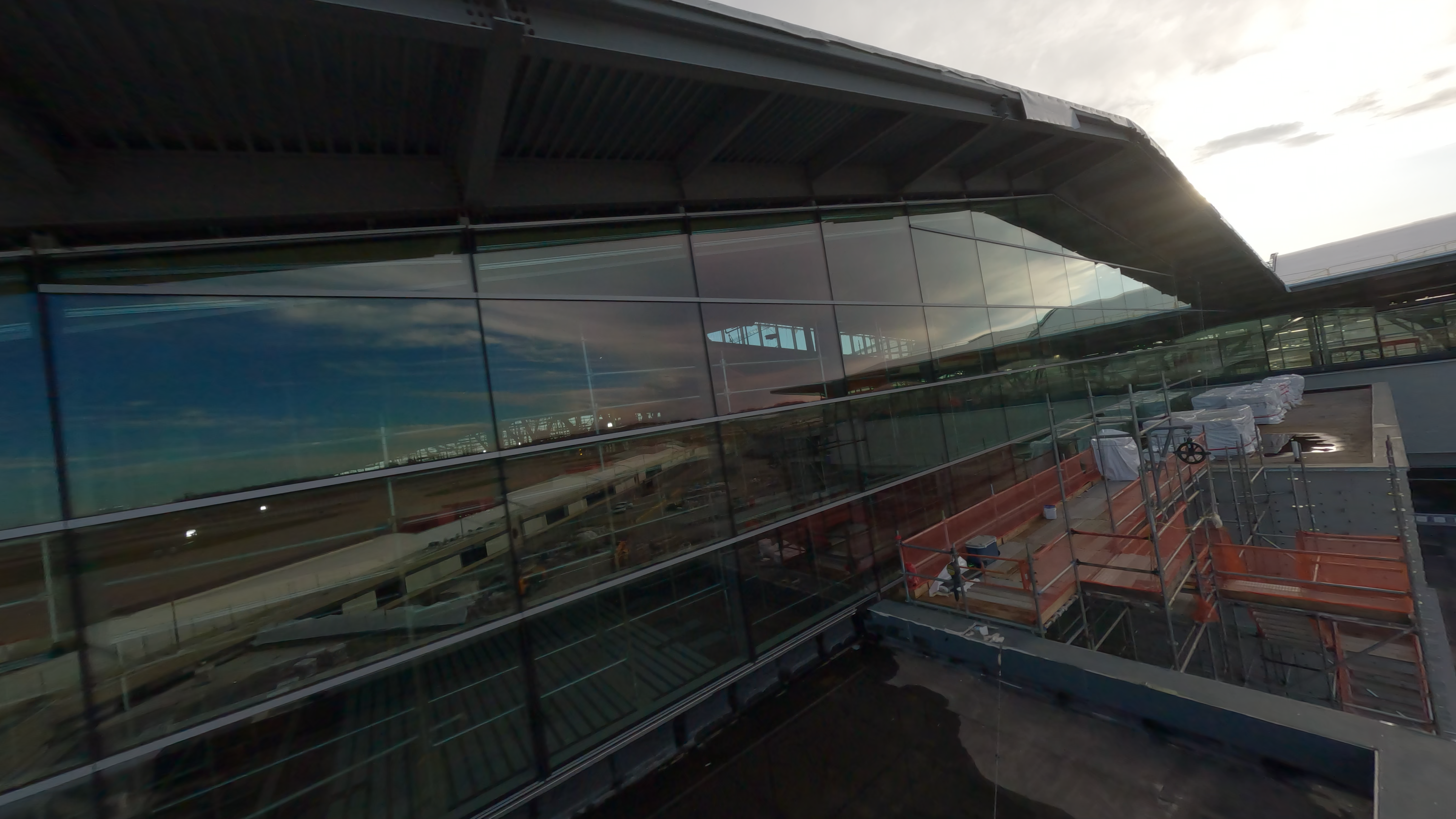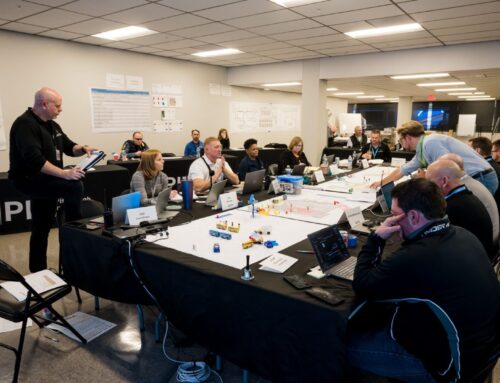With Final Pane in Place, PIT Terminal Achieves Milestone
More than 100,000 square feet of glass reflects region’s past, future
By Rocco Pacella
Published April 15, 2024
Read Time: 3 mins

Long before it became a center of technology and advanced manufacturing, and even earlier than the steel-rich days of blast furnaces, glowing ingots and ashen skies, Pittsburgh was the nation’s epicenter of glass.
Between the late 1700s and early 1900s, well over three-quarters of glass produced in the United States came from Pittsburgh and its surrounding areas.
How fitting then, that last week construction crews placed the last of nearly 1,400 pieces of architectural glass on Pittsburgh International Airport’s new terminal, linking the city’s distinctive past to its dramatic vision of the future.
The last piece of glass signaled another landmark event on the path to the airport’s 2025 opening.
“It’s very, very rewarding,” said Chad Richter, general foreman for Pittsburgh glass installation specialists D-M Products. “I’ve only been a part of a couple other bigger projects, so for me this is a big deal; something I can tell my family about.”
The new terminal consists of nearly 103,000 square feet of architectural glass, transforming it almost entirely into an observation deck for visitors and travelers to view takeoffs, landings and other airport operations.
The design utilizes glass as a connective element, guiding the airport and its visitors into greater alignment with the region’s environment while also referencing its multifaceted history.
“I never worked on large-scale projects like this in Pittsburgh, but I’m from Pittsburgh so to come back home and be able to work on a job like this and work with the trades that we have here is pretty special,” said Nick Suchta, onsite project manager with Pittsburgh-based construction firm PJ Dick.
A legacy project
The new airport draws intensely upon a design philosophy that connects it acutely with Pittsburgh, its history and, to a greater extent, its legacy.
More than 60 percent complete, the project has created over 14,000 total jobs for the region. The vast majority of these have been filled by local tradespeople employed with local firms.
Local companies have leveraged the project to build their businesses and enhance their employees’ skills.
“It means a great deal to my team and I to participate in the Pittsburgh airport project right here in our hometown. I cannot think of a better way to celebrate our 50th year in business,” said Mike Macurak, third-generation owner of Bethel Park-based D-M Products.
Architectural glass comes in sections, known as “lites,” which range in weight from 100 pounds to a colossal 975 pounds. Installing glass of this size requires years of experience but also provides employers with an opportunity to hone the skills of their tradespeople.
“We have employees out there, apprentices out there, furthering their experience and building a career,” said Bill Gurnter, owner of Gurtner & Sons, LLC, another Pittsburgh-based glass installation company working on the new airport.
“Our community and our families know that we are involved in this project, and our employees are proud; we are proud of the work we are doing,” he said.
Placement of the final piece of the new terminal’s glass revealed more of the building’s a greater identity, giving it a more complete appearance and a profound connection to the history of the region it will serve.
But the true identity of the new airport, which will be carried forth for generations, is being crafted by those from the region who are building it, constructing a legacy beyond an airport for their families, their friends and their community.
“This is something that’s not done every day,” said Richter. “This is very unique in everything we did here. Not everybody gets to do this kind of work.”






